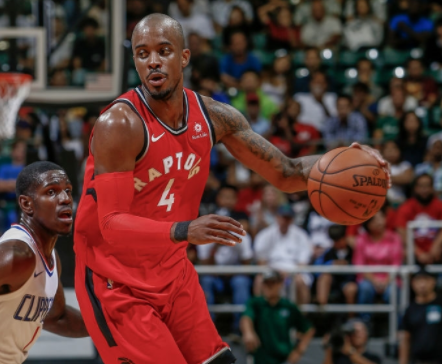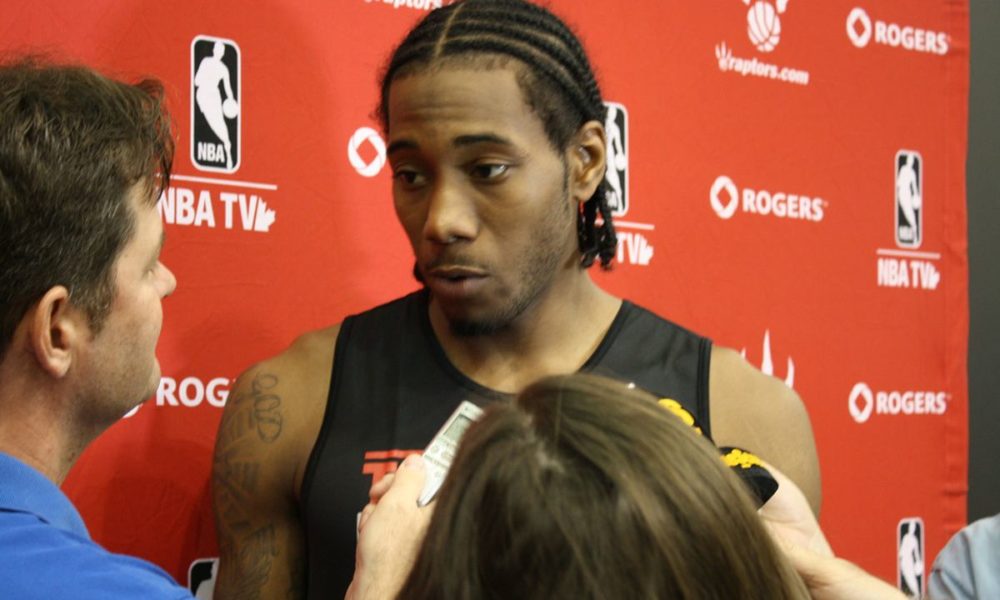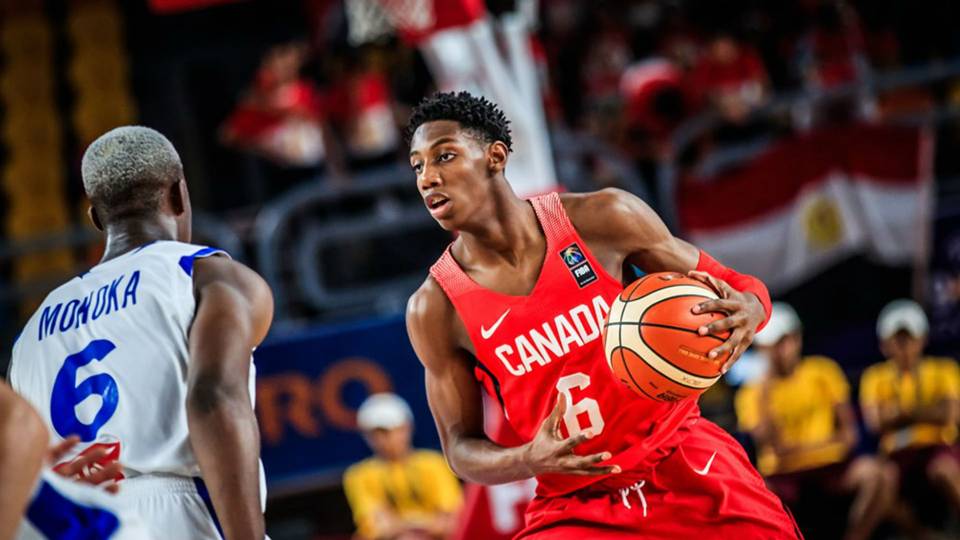You can keep up with all of our player reviews here.
Since being drafted 52nd overall in 2013 by the Minnesota Timberwolves, Lorenzo Brown has become a typical fringe-NBA journeyman of sorts. Originally projected as a rotation-quality backup point guard, Brown has struggled to find a home in the league. His high-level defense and exquisite poise have gotten him a few cups of coffee in the league, but teams have had trouble looking past the glaring weaknesses in his game that caused him to fall to 52nd in the first place. Namely, the perception around his pick-and-roll play and his long-range shooting are what ultimately have held him back. Fortunately, a lot has changed since 2013, and Brown is no exception.
Entering this year, Brown was already a pretty decorated D-League player as he was a two-time D-League All-Star with career averages around 18 ppg, 5apg, and 5rpg. Despite being projected as a true point guard during the draft, over the recent years, Brown’s D-League coaches had transformed him into more of combo guard due to his 6-foot-5 frame and natural scoring ability. In fact, the year prior Brown nearly averaged 24 ppg for the Grand Rapids Drive while playing mainly out of position. However, scouts didn’t see that scoring ability translating to the league and the best offer he got was a newly formed two-way contract with the Raptors. Surprisingly, Brown was one of only a handful of journeyman to procure such a deal as every other team elected to use their two-ways on young prospects in hopes of them making some unexpected leap. Once again, Masai Ujiri proved himself as one of the savviest executives in the league as to many people’s surprise, Brown was the one who took such a leap.
Due to the offseason departures of John Jordan and Brady Heslip, Brown came into the season as his team’s clear-cut lead guard for the first time in years. There was a lot of turnover from the previous year’s roster and, simply put, they weren’t as talented as the prior year’s championship team. 905 coach Jerry Stackhouse recognized this and decided it was in the team’s best interest to give the keys to the offence to Brown. It paid off. Brown rewarded Stackhouse’s confidence in him by having a career year, but not in the ways you would think as virtually all his counting stats stayed near his career averages. In fact, both his scoring and rebounding fell slightly below it. The one exception was his assist rate/
Brown averaged a career-high 8.8 assists, miles above his career average to that point. The transition was seamless. His usage stayed nearly identical to the year prior, but his assist percentage jumped from below 20% to a G-League best 46% (per Basketball Reference)– those are Rondo-type numbers. Additionally, Brown had his best season taking care of the ball as he posted a 2.5:1 assist to turnover ratio. Overall, it was Brown’s most complete offensive season as he finished in the 91st percentile for all offense including passes thrown (per Synergy Sports). Considering he flourished in college as a ball-in-his-hands point guard who thrived off of being able to control pace and dictate the tempo of the game, it is surprising that his previous coaches never put him in that position, but Stackhouse should be commended nonetheless. As the old saying goes “you’re only as good as your fit” (see: Rodney Hood).
—
As was previously mentioned, throughout his career Brown has failed to break into the league due to a few major weaknesses in his game that scouts haven’t been able to look past. I’m not going to sit here and tell you he has fixed them all and turned them into strengths – if he had, he wouldn’t have been in the G-League this year. However, he has managed to improve each of them to the point of being passable in the NBA.
First, and most importantly, would be his 3-point shooting. This was the flaw that caused executives to sour on Brown during his junior year at NC State as he shot a dreadful 26% from beyond the line on a very limited number of attempts. In the years since, his inability to shoot the long ball has become even more scrutinized as the NBA has shifted heavily towards the “pace and space” style of play. While at 33% from three this past year, Brown hasn’t become a sharpshooter by any means; he has become a much better shooter than his percentages would suggest. Watch any 905 game and before the first quarter is over you’ll be able to tell that Brown was the release valve on offense. Whenever a play broke down or it got late in the shot clock they would pitch the ball to Brown and he would have to make a play. As you’d expect this resulted in a lot of flaming bags where Brown would have to take tough off the dribble three’s as the shot clock expired. This notably dragged his percentage down.
A much more illuminating stat is that Brown finished the season in the 94th percentile in the G-League for catch and shoot threes. Additionally, this newfound range made defenders have to abandon their previous strategy of closing out short, and allowed Brown to beat closeouts easier. This resulted in a plethora of easy looks for himself and others that hadn’t been there in previous years. Considering that if Brown gets a shot in the league it would be in a minor role as a backup PG where his looks will mainly be created by others, then it is reasonable to believe that his percentages would be more akin to his catch and shoot numbers then his overall percentage.
The second major weakness scouts saw in his game was his pick and roll play as in his final year at NC State Brown ranked in the 12th percentile for pick and roll offense. This confused many as intuitively his slow and deliberate playing style should have been tailor-made for thriving in basketball’s favourite two-man game. Additionally, at six-foot-five he had great size for seeing over the defense to make passes smaller guards couldn’t. Executives were puzzled. Fortunately, in the five years since, Brown has managed to channel his raw tools and pace and become one of the best pick and roll players in the G-League.
This past year Brown ran by far the most pick-and-roll of his career (650+ possessions) and managed to maintain “very good” efficiency (per Synergy Sports) despite the high volume. Studying Brown’s pick and rolls allows you to see arguably the most elite skill in his game: his poise. Watch any 905 game and it isn’t hard to tell that a Brown pick and roll is their go-to bailout play, and for good reason, as in late shot clock situations Brown was in the 95th percentile for pick and roll offense. Whether it was a drop off to his favourite big man Kennedy Meeks, a bullet pass to a corner shooter, or his (somewhat) newly refined in-between game (floater, short pull, etc), when things got bogged down on offense, the 905 could always look to a Brown pick-and-roll to deliver. That’s a vital skill for PGs in the modern NBA.
—
In recent years, the new CBA has forced executives to get creative in rounding out the ends of their respective rosters as high-level rotation players are seemingly as expensive as ever. This has started a trend of teams using the last of their payroll to sign older role players who have spent most of their career refining their games in the G-League or overseas (Brandon Paul, Daniel Theiss, Malcolm Delaney, etc). To this point, Brown has spent five years in the G-League fine-tuning his game, waiting for his opportunity. This past year Brown averaged 19, 9, and 5, won G-league MVP, First Team All-G-league, and led the 905 to the G-League Finals while being their best player in every game. There is nothing left to prove at that level. Next season will be his age 28 season, which is widely regarded as the dead center of a player’s prime. If an NBA team is going to take a chance on him, now is the time.
There’s no hiding it either– Brown is ready. In fact, during his call-ups this year the Raptors were a +18.7 per 100 possessions with him on the floor. Although he didn’t see many meaningful minutes this year, he did see over 100 minutes in total, and when he played – whether it was garbage time or a second-quarter during Kyle Lowry’s back injury – there was no mistaking it: Brown belonged. He is a lot like Fred VanVleet in that they share a similarly stoic on-court demeanor. They play with such exquisite poise it gives off the impression that no moment is too big. Unfortunately, when called up this year there were times where Brown’s smoothness bordered on passivity. However, this can likely be attributed to former Raptors coach Dwane Casey playing Brown out of position at shooting guard for 80% of his minutes with the main club. As could be seen in his transition to the 905 this past year, Brown is at his best with the ball in his hands, making plays, creating for others. One can only hope that the newly promoted Nick Nurse will see that value in Brown, should the Raptors choose to re-sign him.
If we were all secretly in a movie about Lorenzo Brown’s unusual path to the NBA, we would be getting very close to the best part. In other words: Brown’s had enough cups of coffee, expect him to get a real NBA shot next year. Whether it is the Raptors choosing to retain him (unlikely if they re-sign VanVleet) or some other capped-through-their-nose team with poor guard depth (Charlotte and OKC come to mind) taking a chance on him with the vet minimum, Brown has earned his due. It took a while, but Brown has finally become the player he was once projected as during the 2013 draft: an NBA backup PG.



